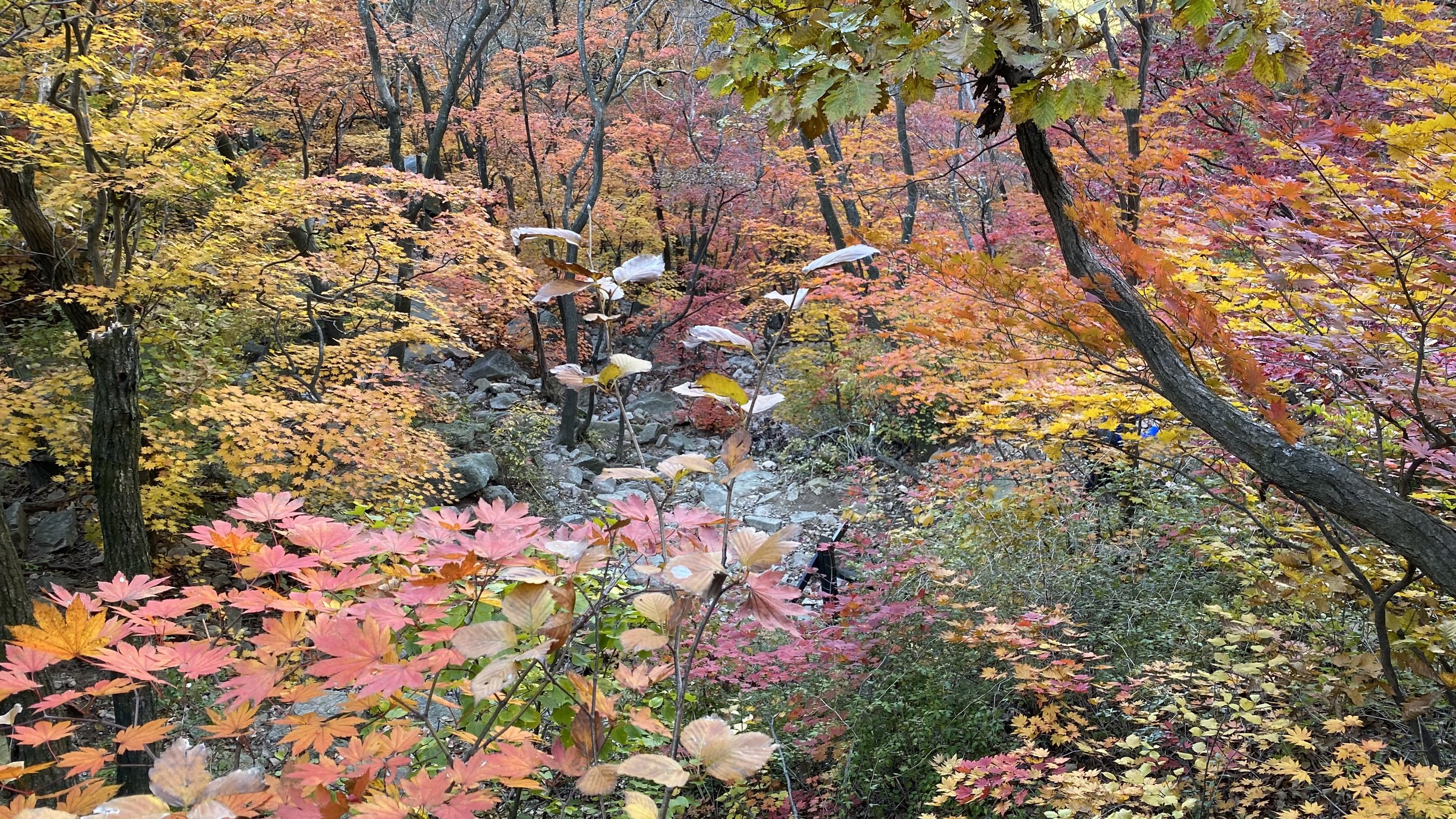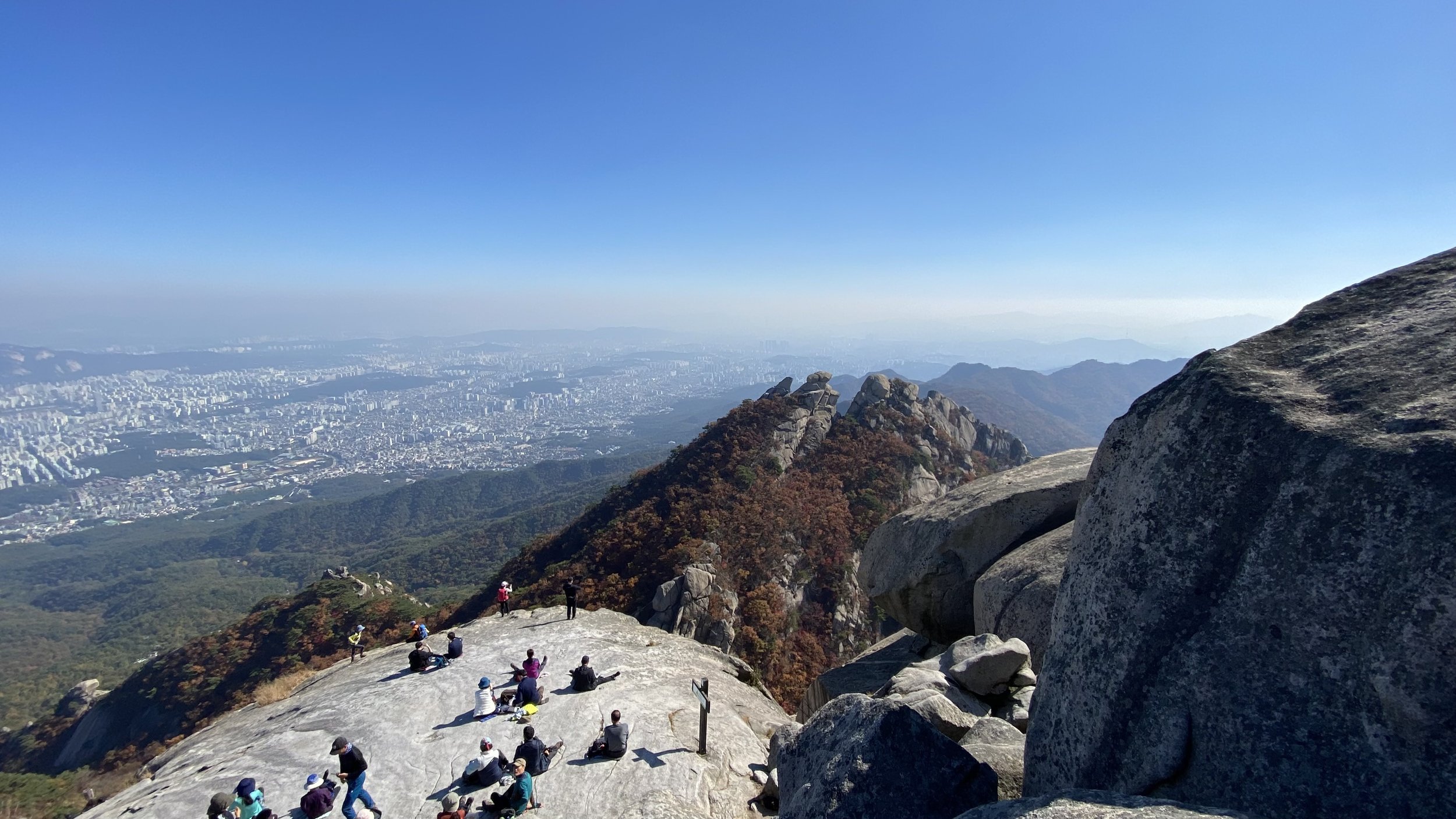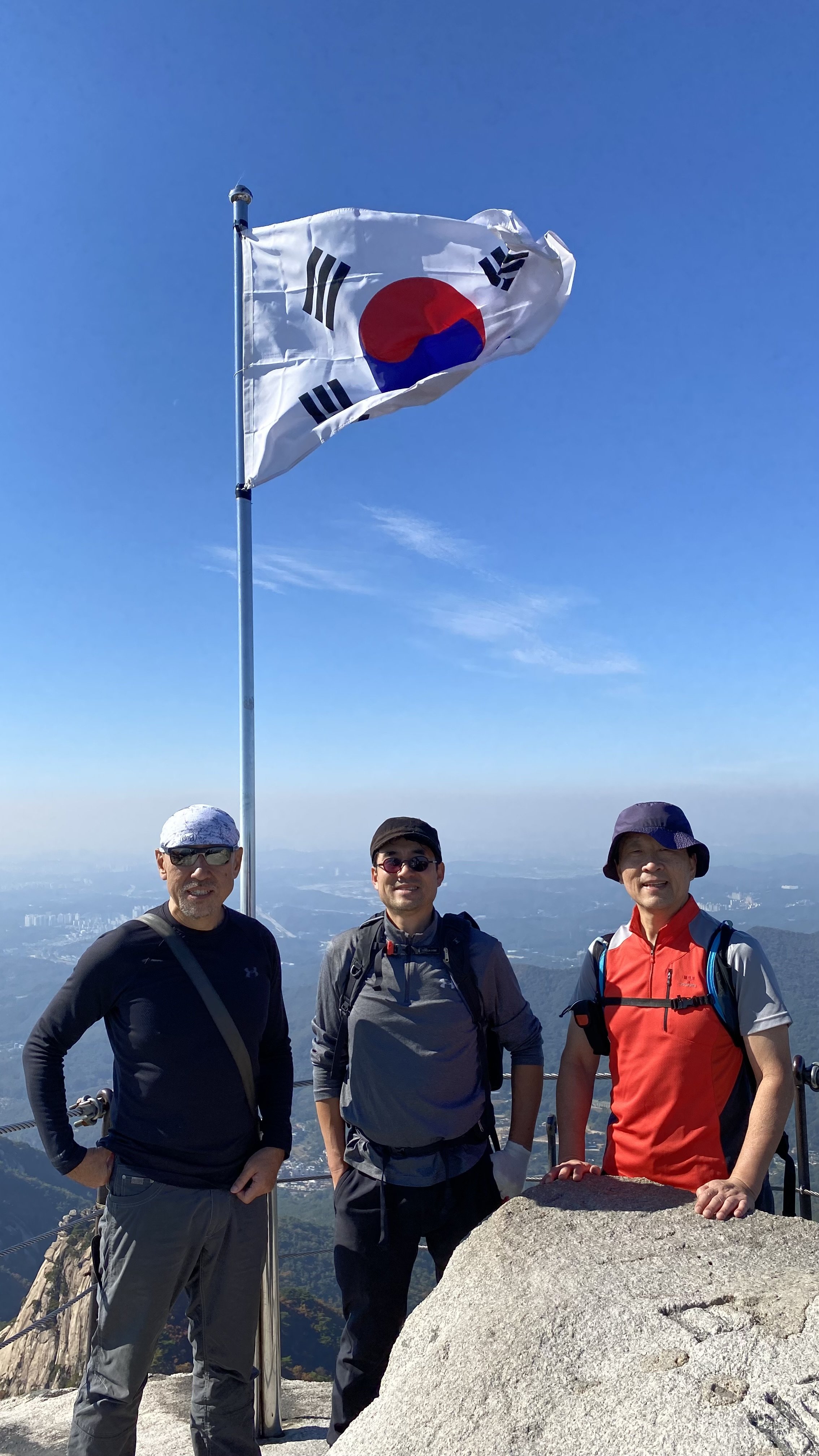YANGPYEONG FALL JOURNAL | WEEK 5
October 21 Entry
I cannot remember the last time I hiked to a mountaintop in the middle of the fall season where I could view fall foliage. In fact, after squinting my brows trying to remember, I don’t think I ever did. Yesterday was that hike, an epic one. I am sure we could have picked the most optimal time to view the fall foliage, but it was close enough to my undiscerning eyes. I was told in another week the mountains will sing nature’s spectacular chorus of the glorious tints of autumn foliage.
I was invited by a seasoned hiker (who is also a retired missions leader) who seems to know most of the mountains in South Korea by name and with intimate familiarity. He rattled off the names of mountains, villages, and specific trails he has conquered which sounded all gibberish to me because I was unfamiliar with most of the names. He invited another friend of his, who also is well-versed in hiking and outdoor activities. After having served in Central Asia for multiple years, he is currently serving as a trainer for aspiring missionaries in Korea.
They came out all decked out from top to bottom in ways that were evident that they were serious mountain lovers. Though I wasn’t wearing a pair of basketball or walking shoes which would have been woefully inadequate, I, on the other hand, lacked “professional” gear. I needed one of those non-slippery mountain hiking boots. Admirably though, my trail running shoes held and held well. I needed a day pack that snugs my shoulders and back like a second skin. But my city traveler’s bag also held without tripping me up. My best equipment? My pair of REI wool hiking socks! They have proven their worth time and time again by not giving my feet ill-timed blisters. Yay, REI! A few days ago, when I told someone that I was going to join a group to the Baekundae Peak at Bukhan Mountain, the first thing he told me was that people die falling from the rocks near the top. I chuckled and pretty much ignored his well-intentioned warning while instinctively turning my head to see if my wife was also listening. My wife, sitting right next to me, looked at me like “Are you sure about this hike?” Though she didn’t say a word, she might as well have said it because I deciphered it out of her mind. I must be a mind reader!
All in all, according to my faithful Apple Watch, we did close to 12 miles with about 24,000 steps and close to 300 floors, up and down. I was thankful that my legs did not betray me and were still intact after a demanding but rewarding hike. I was told by multiple sources including the host that this was one of the most beloved trails in Korea for its unique embodiment of beauty and wonder. We could not have picked a better day in terms of temperature in the low 60s high and low 40s low with a gorgeous sunny fall sky, ever reminding me to live as free as the sky. After meeting at a subway station, we took a bus, packed like sardines in a can with other hikers, to a nearby trailhead which we promptly missed because we were busy catching up and getting to know each other. We improvised and decided to reverse our course, ascend what we were going to descend, and descend what we were going to ascend. As a strong P on MBTI, the change did not bother me at all. Instead, it was a brilliant decision in retrospect because we went in the opposite direction from most people’s route. Even then for a weekday hike, the trails traveled well. I suppose people knew and wanted to seize the day.
Our otherwise very meaningful conversations faded into the background and got drowned in the sight of the magnificent blaze of the autumn mountains. Half of our conversations revolved around accepting and acknowledging what the Creator of nature was gifting us that day. Words fell woefully short though we tried followed by unrehearsed bursts of exclamations, and it seemed clear that silence was the most fitting way to absorb and thank the Creator. What we can give back to the Creator is to simply accept the wideness and wildness of nature’s beauty which obeys the Creator in love.
After circling back to our original meeting place, our seasoned guide took us to a local fried chicken and beer joint in the neighborhood. As soon as we sat down, we each ordered 1,000 cc chilled draft beer, clinked our beer mugs, and let it soak our thirsted and tired bodies with ridiculous satisfaction. I felt like I belonged in some sort of Renaissance Fair. Apart from the can of beer I gulped down on the United flight over to Korea last year after working out on the plane like a wild man (the plane was practically empty lest you think I was a lunatic), this beer ranked on the same level. I think I am beginning to appreciate beer since I can associate it with certain accumulating beer episodes.
To top off the day in the right way, we decided to do a sauna, walked over to the next building, and thanked our bodies for taking care of us that day. After I came home, I made sure I popped an Advil before I went to bed, since I knew my legs would cramp without the aid of Advil.


























